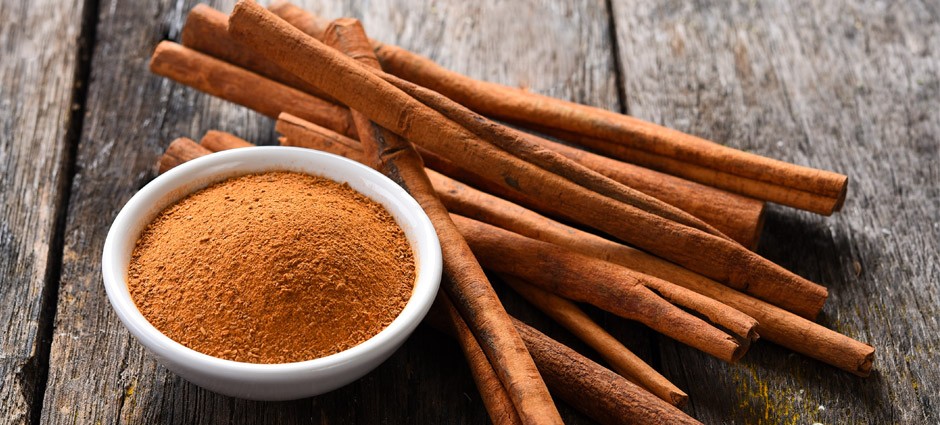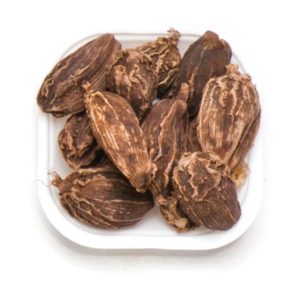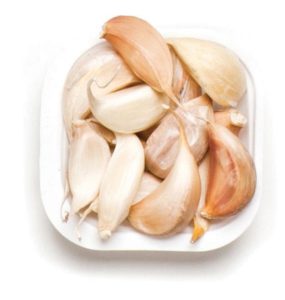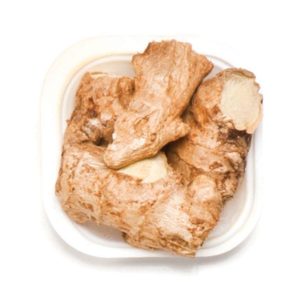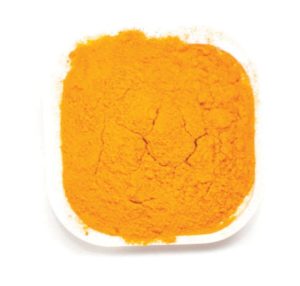As the weather cools, we often turn to comfort foods to stay warm. We can also incorporate certain warming spices into our meals to heat us up in winter. Here are five we recommend.
Cardamom
Hailing from seed pods, cardamom serves a triple purpose in the spice bowl that’s near the exit of an Indian restaurant: It freshens your breath, improves digestion and helps prevent cavities. Studies suggest that cardamom may protect against Helicobacter pylori, a bacteria linked to stomach ulcers. This spice is a wonderful addition to cookies, ice cream, chai, hot milk, breads and stews. Use preground cardamom, or crack and grind the pods to reap the full flavor—a blend of floral notes, camphor, lemon, mint and pepper—of the “queen of spices.”
Try:
 Cinnamon
Cinnamon
This aromatic spice, with its sweet and savory flavor, is known to reduce inflammation and support healthy blood sugar and lipid levels. A study at the University of Michigan found that the chemical compound that gives cinnamon its flavor may help fat cells burn energy, making it a good addition to a weight-management program. Sprinkle it on squash, sweet potatoes, stewed apples, oatmeal and toast.
Try:
Spiced Goat Cheese Stuffed Dates
 Garlic
Garlic
Warming, medicinal and flavorful, garlic is one of the most versatile spices, available in roasted, raw and powdered forms. Mix a garlic clove with one egg yolk, ½ cup of olive oil, and ¼ teaspoon each of salt and lemon juice to make an aioli for dipping. Add chopped cloves to sauces, soups, breads and salads. Garlic’s sulfur compounds support its use as a medicine for lowering risk of heart disease and boosting immunity and sex drive. Just remember to brush your teeth before you kiss.
Try:
Brothy Beans with Roasted Garlic and Parmesan
Lemon Garlic Asparagus with Tomato Confit
 Ginger
Ginger
Warm and spicy ginger adds zing to pastries, curries and stir-fries. Try it in smoothies, too. It’s delicious by itself as a tea for soothing an upset tummy. The root contains antioxidant and anti-inflammatory compounds that ease flu symptoms, menstrual cramps and osteoarthritis. Use dry-ground or freshly grated; approximately ½ teaspoon of dry spice is equivalent to 1 tablespoon freshly grated ginger root.
Try:
Ginger Garlic Shrimp & Wild Rice Bowl
 Turmeric
Turmeric
This aromatic root, with scents of orange or ginger, is what gives curry its color. It has been used in India for thousands of years to flavor food and as an anti-inflammatory medicine. Turmeric’s active ingredient is curcumin, which is renowned for relieving arthritis pain and swelling. Add turmeric to curries, sautéed greens, soups, rice, scrambled eggs and tea. One teaspoon dried equals 1 tablespoon freshly grated root.
Try:
Eastern Mediterranean Chickpea and Cauliflower Rice Bowl

